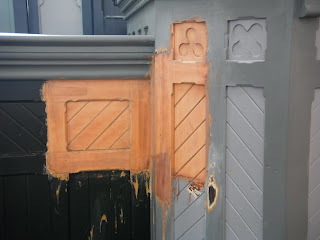Do you have any pre-decimal currency ?
We would like to build up a time tine for the chapel through coins. The chapel has lived through the reigns of nine monarch going back to King George III, though by the time the congregation started to build the George Street Chapel he was in fact seriously ill and his son reigned as Prince Regent from 1811 until George's death in 1820.
The chapel was built between 1815 and 1816 - it has seen the reigns of -
George III 1760 - 1820
George IV 1820 - 1830
William IV 1830 - 1836
Victoria 1837 - 1901
Edward VII 1901 - 1910
George V 1910 - 1936
Edward VIII 1936 (abdicated)
George VI 1936 - 1952
Elizabeth II 1952 to present
Today we only have coins with a single monarch on them, Queen Elizabeth II.
But before decimal coinage was introduced we all would have had coins with the heads of up to five British monarchs going back to Queen Victoria.
 |
| 1d coins minted during the reigns of Victoria, Edward Vll, George V, George Vl, Elizabeth ll |
As part of our educational programme we would like to re-introduce the type of arithmetic that children used to have to master at school - 12 pennies to a shilling, 4 thruppeny pieces to a shilling, 20 shillings to one pound - to say nothing of half-pennies and farthings, six penny pieces, shillings, florins, half-crowns, 10 shilling notes and guineas !!
Do you remember all the slang terms or sayings - tanner, 'bob-a-job week'', 'penny-for-the-guy', Lsd?
During the change over from 'old money' to decimal coinage old sixpenny pieces were used as 2 1/2 new pence coins.
Now, try working out 10% of 13 guineas?!
Wanted - farthings, half-pennies, pennies, three-penny bits, six penny pieces, shillings, florins, half-crowns, 10 shilling notes and pound notes.
Also, do you have any of those really annoying decimal coins you used to loose in your purse - New Pennies or Half-new Pennies which are no-longer legal tender. All will add into the Chapel Experience.
If you can help, please drop your unwanted old coins into a local Age UK shop in Oldham and they will find their way to Maggie Hurley, Age UK Community Development Officer.
or post some to Age UK Oldham, Church Lane, Oldham OL1 3AN














































